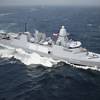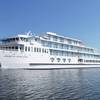NYK and MTI Co. Ltd. have jointly developed a diagnostic tool that records, visualizes, and analyzes the operational sounds of a vessel’s engine plant. The tool is one of the group’s big data initiatives to encourage greater safety and has been given the name "Kirari MUSE." Onboard trials will begin shortly.
Kirari MUSE comprises equipment for recording and visualizing sounds around the vessel engine plant and software that analyzes the sounds and detects anomalies. More specifically, Kirari MUSE utilizes electrical listening devices to record, accumulate, and share sounds that can then be visualized as data on a tablet. Software then diagnoses the engine condition using logic based on vessel operation experience.
The sound of machinery in operation is often an important factor used to diagnose the condition of that machinery. However, an unfamiliar sound is often difficult to convey to others. Kirari MUSE enables us to easily share sounds with others on ships and shore, and accumulated sound data can help us to realize small changes day by day.
In addition, determining the normality of operational sounds often depends on the experience and judgment of crew members. Utilizing an application that accumulates the know-how of many years of vessel operational experience will allow NYK to perform highly accurate diagnoses and detect abnormal conditions and breakdowns of machinery at an early stage. This will help the NYK Group shift from conventional time-based maintenance to condition-based maintenance.
The name “Kirari MUSE” was derived from the subtitle of NYK’s medium-term management plan and the inspirational goddesses (i.e., muses) in Greek mythology. This tool is expected to be used for all kinds of machinery and equipment that produce operational sounds.
From an early stage, the NYK Group has been focused on making use of big data and is currently taking advantage of data analysis to address a variety of issues. The NYK Group aims to achieve further high-quality safe operation by utilizing big data not only for optimal vessel operation but also for maintenance support by monitoring the condition of the engine plant.













